ASRock Rack 1U4G-ROME Power Consumption
The redundant power supplies in the server are 2kW units. These are 80Plus Platinum-rated units. At this point, most power supplies we see in this class of servers are 80Plus Platinum rated. Almost none are 80Plus Gold at this point and a few are now Titanium rated. These power supplies seemed very similar to the ones we saw in the 2U system.
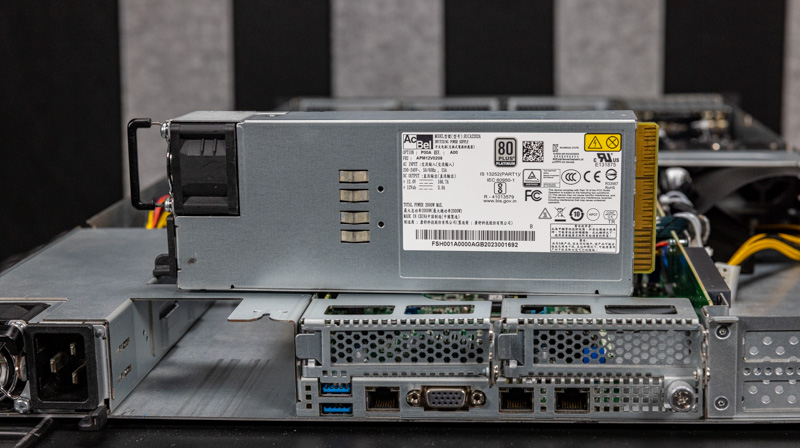
For this, we wanted to get some sense of how much power the system is using with an AMD EPYC 7443 CPU and 256GB of memory that we can imagine will be a common configuration. We used this same CPU on the 2U system because we wanted to have a reference point for the 1U. 200W TDP is right on the edge of where ambient temperatures matter in the 1U platform.
We saw an idle of around 0.53kW. We saw maximum power consumption of around 1.6kW (almost 1.65kW but we round to two digits) but most of our workloads ran in the 1.2-1.4kW range. That means that 40U of these systems, we would expect our readers to plan for around 1.5kW/ system or 60kW just for the servers, not including networking or other gear in the rack. These systems require high-density power and cooling solutions.
Note these results were taken using a 208V Schneider Electric / APC PDU at 17.0C and 62% RH. Our testing window shown here had a +/- 0.3C and +/- 2% RH variance. We are going to quickly note that on the days that we did the official runs the data center was running relatively cool and it was about 0.5C cooler than when we did the 2U system. There is an environmental sensor just in front of the portion of the rack we use for testing. Environmental factors matter a lot for these types of systems.
STH Server Spider: ASRock Rack 1U4G-ROME
In the second half of 2018, we introduced the STH Server Spider as a quick reference to where a server system’s aptitude lies. Our goal is to start giving a quick visual depiction of the types of parameters that a server is targeted at.
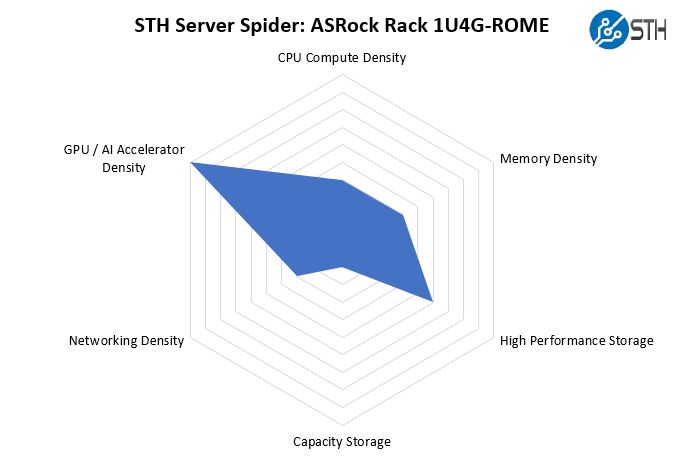
While this may not have the densest CPU and memory configuration, that is not the point of this server. Instead, this server is designed to fit 4 GPUs per U which means 160x GPUs in 40U of rack space. That is really the point of this server as it is twice as dense as the 4U 8x GPU and 2U 4x GPU solutions on the market.
One of the more interesting aspects is that by adding EDSFF one can actually fit 8x PCIe Gen4 NVMe SSDs in this server. That is something that many previous 1U 4x GPU servers could not do.
Final Words
Overall the ASRock Rack 1U4G-ROME performed about how we would expect. The company’s 2U offering was slightly faster due to better cooling, but the trade-off is really the excellent density that one achieves with a solution like this. Make no mistake though, if you want a rack full of these solutions, you will need the power and cooling infrastructure to support them.
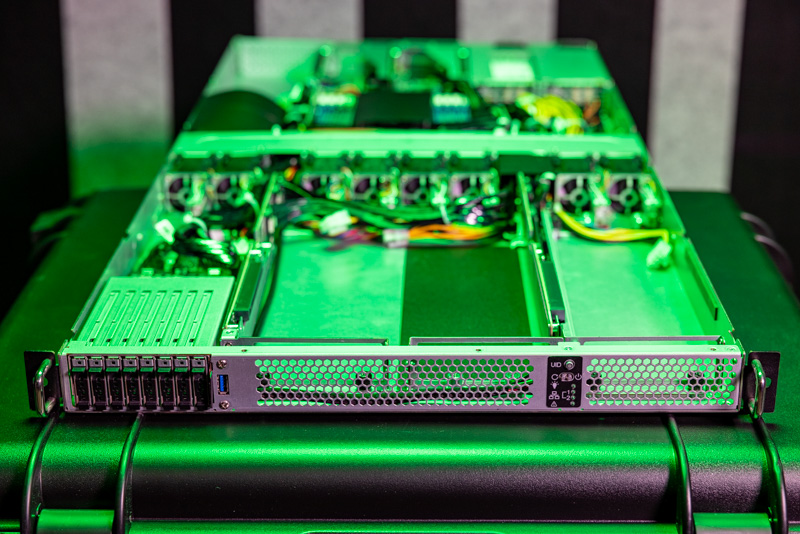
Perhaps the standout feature was the EDSFF E1.S SSD inclusion. It would be preferable to have E1.S 9.5mm drives on one side. On the other side, that would mean fewer drives would fit. Having the M.2 adapter solution makes this immensely more useful. It should be reminded that other solutions in the market either had no front storage bays or up to two maximum, even in deeper chassis. Having more devices means more capacity and performance so going from 0-2 up to 8 is a huge difference.
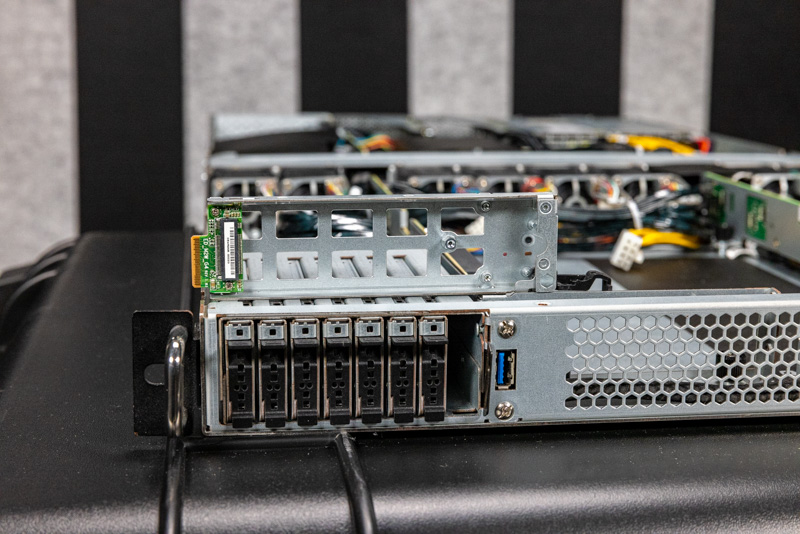
The system certainly does feel a bit cramped. At only 880mm deep, it is actually one of the shallower systems in its class. Still, that means the middle of the system has a lot of cables and we have very thin airflow guides that make it slightly harder to work on. That is a trade-off of reduced physical footprint, more components closer together.
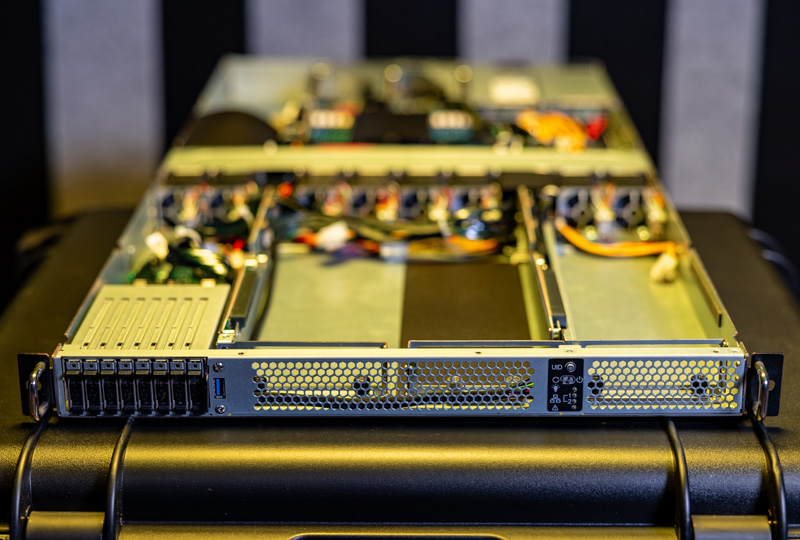
Overall, ASRock Rack and their partner Core Micro Systems made some serious innovations modernizing the 1U 4x GPU platform in the 1U4G-ROME.




The EDSFF storage and connectors are a thing of real beauty. It would be wonderful if this tech supplants m.2 in the desktop world also.
@Patrick, can you tell us the part number and manufacturer of the fans used to force air theough this system?